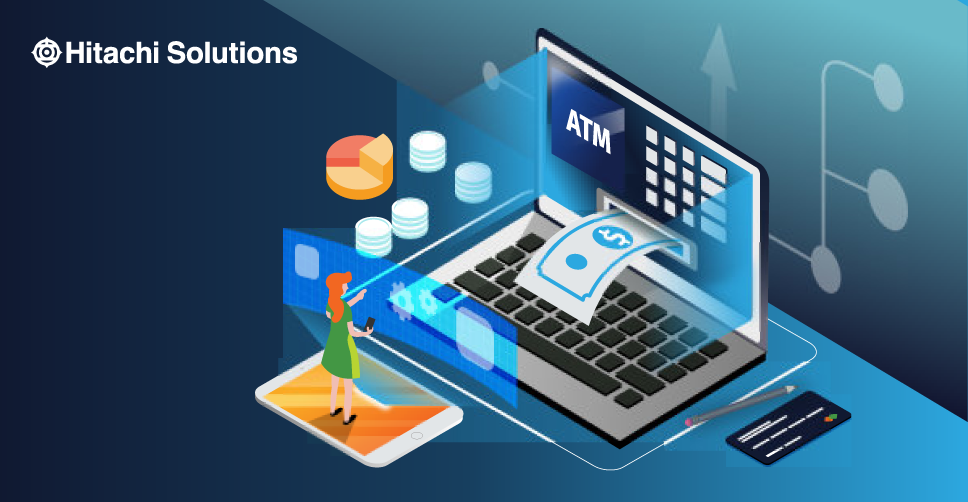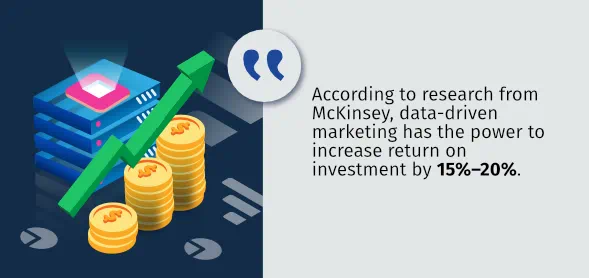

The Time is Now: Digital Transformation in Financial Services
A Guide for Digital Leaders Looking to Implement Change.
Download the EbookYou’ve seen the headlines and heard the doomsday predictions all claim that disruption isn’t just at the financial services industry’s doorstep, but that it’s already inside the house. And, loathe though we are to be the bearers of bad news, there’s truth to that sentiment. Despite some initial setbacks, fintech has finally made good on its promise to transform the way banks do business, leading 88% of legacy banking institutions to report that they fear losing revenue to financial technology companies.
It isn’t all bad news, though. Though it’s true that disruption threatens legacy organizations’ dominion over the financial services industry, it also presents a unique opportunity: If traditional banks can learn from their tech-savvy competitors and make technology — starting with banking automation — a core part of their strategy, they can provide a more comprehensive banking experience and maintain their competitive edge.
Let’s look at some of the leading causes of disruption in the banking industry today, and how institutions are leveraging banking automation to combat to adapt to changes in the financial services landscape.
Key Concerns Affecting Banks Today
Disruption from players such as digital-only banks, FinTech firms, and Big Tech companies with designs to move into the financial services sector all threaten to upend the banking industry as we know it, and to encroach on traditional banks’ market share in the process. This clear and present danger has led many traditional banks to offer alternatives to traditional banking products and services — alternatives that are easy to attain, affordable, and better aligned with customers’ needs and preferences.
When it comes to maintaining a competitive edge, personalizing the customer experience takes top priority. Traditional banks can take a page out of digital-only banks’ playbook by leveraging banking automation technology to tailor their products and services to meet each individual customer’s needs. For example, banks can leverage artificial intelligence (AI) and machine learning to monitor and analyze customer spending patterns; using this data, banks can then partner with retail firms to offer customers discounts on frequently purchased products through their banking portal.
Another key element to withstanding disruption is to monetize data. Traditional banks can use data science algorithms to detect hidden patterns in the way consumers purchase and utilize products and services, which can, in turn, be used to improve product engineering or increase sales — not unlike how some businesses use data to understand how their customers spend money. For example, banks can use real-time data analytics to reveal clues about customers’ specific needs and interests and craft marketing campaigns — including targeted emails and SMS messages and special incentives — based on that information. According to research from McKinsey, data-driven marketing has the power to increase return on investment by 15%–20%.

With threats to financial institutions on the rise, traditional banks must continue to reinforce their cybersecurity and identity protection as a survival imperative. Risk detection and analysis require a high level of computing capacity — a level of capacity found only in cloud computing technology. Cloud computing also offers a higher degree of scalability, which makes it more cost-effective for banks to scrutinize transactions. Traditional banks can also leverage machine learning algorithms to reduce false positives, thereby increasing customer confidence and loyalty.
The final item that traditional banks need to capitalize on in order to remain relevant is modernization, specifically as it pertains to empowering their workforce. Modernization drives digital success in banking, and bank staff needs to be able to use the same devices, tools, and technologies as their customers. For example, leading disruptor Apple — which recently made its first foray into the financial services industry with the launch of the Apple Card — capitalizes on the innovative design on its devices. Banks that hope to compete with Apple in the digital payment realm also need to take advantage of leading-edge technology by empowering developers with cloud-based DevOps tools to build rich user experiences into customer-facing apps and, enabling employees to use modern analytics with advanced customer relationship management (CRM), enterprise resource planning (ERP), and business intelligence solutions.
Banking Automation in Action
We’ve talked about banking industry concerns and how to address them — now it’s time to take a closer look at how banking automation fits into the picture.
Marketing
Banks can leverage the massive quantities of data at their disposal by combining data science, banking automation, and marketing to bring an algorithmic approach to marketing analysis. Marketing teams need to be able to look at what their audiences are searching for and to run test campaigns against that information; as noted earlier in this article, these test campaigns enable marketing teams to collect additional data and refine their strategies accordingly. Data science helps banks get return analysis on those test campaigns that much faster, which shortens test cycles, enables them to segment their audiences at a more granular level, and makes marketing campaigns more accurate in their targeting.
Personalized marketing is the ultimate goal: Banks need to be able to generate campaigns on a moment’s notice that speak directly to the individual customer’s needs and what they’ve been searching for. Eventually, this high degree of personalization will extend not just to marketing, but to custom products and services, as well.
Customer Experience
The key to an exceptional customer experience is to prioritize the customer’s convenience wherever possible. From expediting the new customer onboarding process to making it easy for customers to get answers to pressing questions without having to wait for a response, banks are finding ways to reduce customers through the power of automation. As an added bonus, by eliminating friction around essential tasks, banks are also able to focus on more important things, such as providing personalized financial advice to help customers resolve problems and obtain their financial goals. Banks can also use automation to solicit customer feedback via automated email campaigns. These campaigns not only enable banks to optimize the customer experience based on direct feedback but also enables customers a voice in this important process.
Fraud Prevention & Protection
Customers want a bank they can trust, and that means leveraging automation to prevent and protect against fraud. The easiest way to start is by automating customer segmentation to build more robust profiles that provide definitive insight into who you’re working with and when. To that end, you can also simplify the Know Your Customer process by introducing automated verification services.
Other ways in which banks can use automation to prevent and protect against fraud include using accounts payable automation to reduce human touchpoints, automatically freezing compromised accounts, fast-tracking false positive investigations by automating manual tasks, and more.
Regulatory Compliance
Truth in Lending Regulation Z, Federal Trade Commission guidelines, the Beneficial Ownership Rule… The list goes on. With a dizzying number of rules and regulations to comply with, banks can easily find themselves in over their heads. Fortunately, automation makes it easier to plan ahead.
By automating complex banking workflows, such as regulatory reporting, banks can ensure end-to-end compliance coverage across all systems. Banks can also automate account structures in a process known as householding or superhouseholding, which provides additional insight into broader account relationships, such as opportunities for products and services or potential risks within the relationship. By leveraging this approach to automation, banks can identify relationship details that would be otherwise overlooked at an account level and use that information to support risk mitigation.
Adapt to Disruption With Hitachi Solutions
Disruption doesn’t have to be a death sentence. For legacy organizations with an open mind, disruption can actually be an exciting opportunity to think outside the box, push themselves outside their comfort zone, and delight customers in the process.
At Hitachi Solutions, we specialize in helping businesses harness the power of digital transformation through the use of innovative solutions built on the Microsoft platform. We offer a suite of products designed specifically for the financial services industry, which can be tailored to meet the exact needs of your organization. We also have an experienced team that can help modernize your existing data and cloud services infrastructure. Anything you need; we’re here to help. Contact us today to get started.


